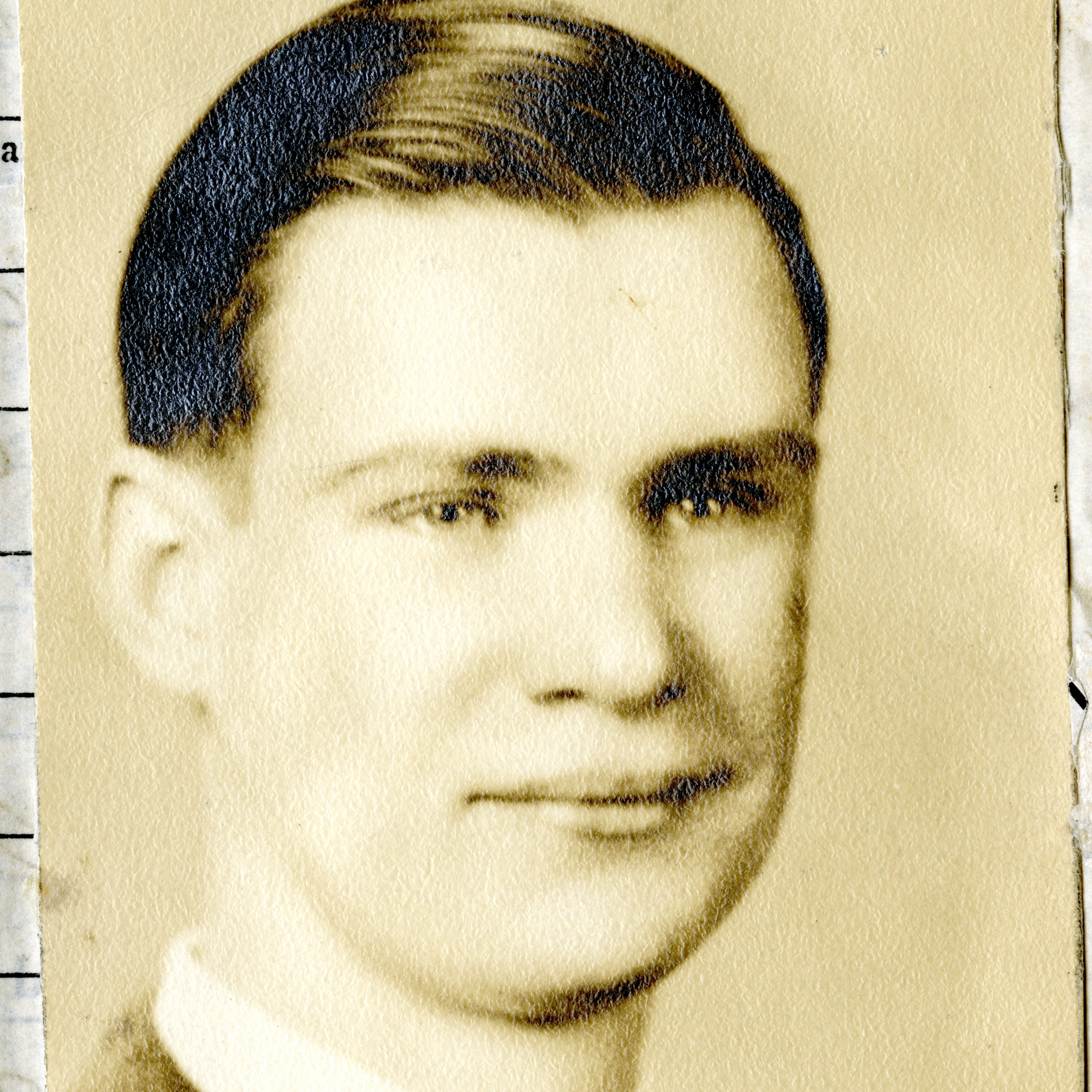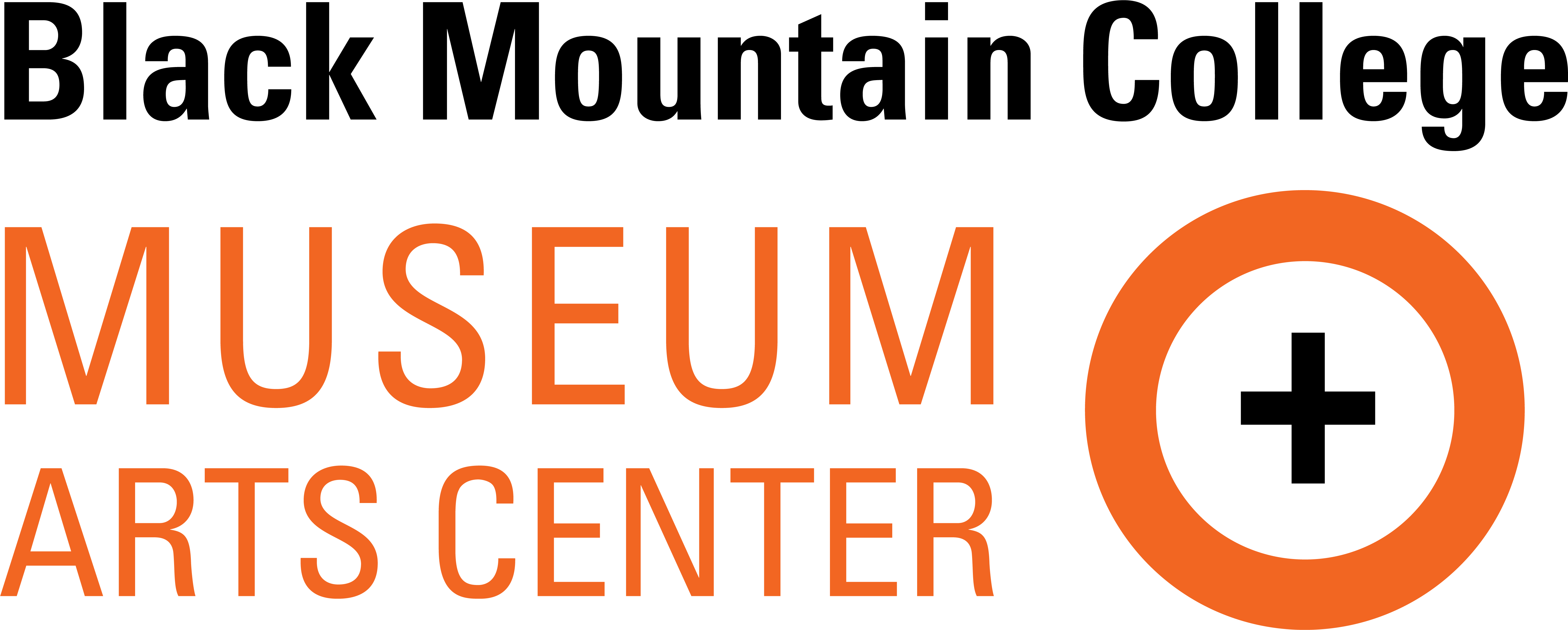Richard "Dick/ Rick" Amero

Photograph included with student application. Courtesy of Western Regional Archives
Courtesy of Western Regional Archives
FOCUS
Architecture
ROLE
Student
ATTENDANCE
1946 - 1947
BIRTH
1924-07-16
Gloucester, MA
DEATH
2012-12-22
San Diego, CA
Richard Amero spent his childhood in Gloucester, Massachusetts, where his father, a second-generation French Canadian from Nova Scotia, was a carpenter. His father was eager for him to break with the traditional family trade and deliberately “kept [him] as far away from the tools – carpenter tools – as he could.”
When he was released from the army, Amero recalled that he was “a very confused G.I., without any thought about my future.” He had heard about Black Mountain College from Addison Bray, a former student and Gloucester native. Amero had not taken a college preparatory curriculum in high school and was concerned that he would have little chance of acceptance at a conventional college. He hoped that a year at Black Mountain would enable him to enter a more conventional school.
Amero enrolled in the fall of 1946. At the time he was interested in literature. He recalled that of the Black Mountain teachers, David Corkran, M.C. Richards and Theodore Rondthaler stand out. Although Corkran did not teach literature per se, his class in American Civilization drew on the writing of American authors.
Amero recalled that Corkran “was always either filling or emptying his pipe, and in between, we were talking into a blue heat.” He found the “arguments and disagreements” stimulating and would often play the part of the devil’s advocate, assuming unpopular positions with which he, in fact, disagreed.
Although Amero did not find M.C. Richard’s class to be as stimulating as Corkran’s, he admired her “remarkable ability of pulling together a diverse number of students and getting them involved in some simple topic.” Theodore Rondthaler taught a class on utopias, and Amero was especially interested in comparisons with the Black Mountain experiment.
Amero also took a class with John Wallen and was interested in his process of teaching in which role playing and psychotherapy wer used. Amero recalled that he somehow escaped serious work on the work program. He played the role of Pierrot in a production of Edna St. Vincent Millay’s Aria Da Capo, directed by Arthur Penn, a student teacher.
When he left Black Mountain after a year, Amero enrolled at Bard College. He recalled that at Black Mountain, although students came from diverse economic and social backgrounds, he never felt “snobbishness or a sense of superiority.” In contrast, at Bard he felt like a student “from the other side of the tracks.” He recalled that “there was a lot of emphasis on who you were and who your family was and what connections they could make.’ Nevertheless, he appreciated the flexible curriculum and classes with respected writers including, Ted Weiss and James Merrill.
When Amero graduated from Bard, he decided not to enroll at the Harvard Graduate School of Education, where he had been accepted. Instead, at loose ends, having gone through the emotional turmoil of coming to terms with his sexual orientation while at Bard, he moved to San Diego. He worked for a year for Convair in the defense industry and then in material management for forty years with the San Diego Gas and Electric Company.
Amero’s paying job with the utility company was merely a means for an income. Heeding Thoreau’s advice that if one wished to save the world, the best place to start is with the “immediate and next-door,” he chose Balboa Park, then a rundown and decaying inner city public park as his cause. In a letter of December 6, 1999 to Mary Emma Harris, Amero wrote of his philosophy of park development:
“As a believer in open-air park values and the beauty of nature I place the simple advantage of being able to walk in the open-air with the clear-sky overhead and the sights and sounds of nature close at hand ahead of all other advantages. Is there something of the charm of Lake Eden or of the haunting mystery of the Smoky Mountains and the Blue Ridge Parkway present in this ... I think so.
“There is a cleavage between my view of the park and that of most San Diegans . . . which should not surprise me. Did the cagey, bustling, church-going citizens of Concord approve of Thoreau? I like the grand, open-air, natural quality of a city park. In this, I go along part of the way with Frederick Law Olmsted, but I see the need for a mixture of active and passive recreational facilities. I want city parks to offer comers – residents and visitors – a close-up experience of nature, of fresh and clean air, and of unmolested spaces in which they can run and play, mix with one another and be by themselves without paying money for something from a tube, bottle or television and movie screen.
“I don’t want parks to contain a multitude of buildings, theaters and art works – whether they be murals, sculpture, or a (to me) weird anomaly promoted nowadays that goes under the heading of “earth sculpture.” Artists like to have a free hand and a generous supply of free money (that is taxpayers’ money) to use as they please. Fine, let them get as much support as they can and let them create as they please; but keep it out of the public parks. (Are Black Mountain College artists furious with me for saying this?) Every so often I read an architectural or art critic saying nature is the greatest artist, and I agree with this. Some art may be autonomous – it creates its own special place – but other art enlarges one’s appreciation of all life and all being.
“So, you can see I have had numerous run-ins with local groups promoting commercial and private attractions, cultural, scientific and theatrical institutions, and art works in Balboa Park. . . .”
Amero has been a member of the National Association for Olmsted Parks, the Trust for Public Lands, the San Diego Natural History and History Museums, the San Diego Zoological Society, Friends of Central Park and other organizations. He has written for newspapers and for the National Recreation Association. Amero’s text on Balboa Park was used by Andrew Hudson in “Photo Secrets: Balboa Park” and “Photo Secrets: San Diego” (Hudson, 1999). He was a consultant to Florence Christman, author of The Romance of Balboa Park (San Diego Historical Society, 1985). Amero’s notes and writings on Balboa Park are housed as the “Amero Collection” at the San Diego Historical Society Research Archives."
Biography written by Mary Emma Harris for the Black Mountain College Project.
Black Mountain College Project
Mary Emma Harris interviewed Richard in 1998 and the transcript is available from Appalachian State University under The Mary Emma Harris and Black Mountain College Project, Inc. Oral History collection.
Topics: Hearing about BMC – service in World War Two – family background – arrival at BMC – study with David Corkran and M.C. Richards – John Wallen psychodrama technique – general studies – trip to Trappist monasteryand Berea College – work program – Arthur Penn drama productions and Aria da Capo – enrollment at Bard College – comparison of Bard and BMC – post-BMC employment and work with Bilbao Park
Courses Taken
Fall Term 1946-1947: American Civilization (Corhran), Shakespeare (Richards), Psychology of Social Issues (Wallen), Economic Analysis (Neibyl), Work Program
Spring Term 1947: American Civilization (Corchran) American Literature (Corchran), Small communities (Rondthaler)

